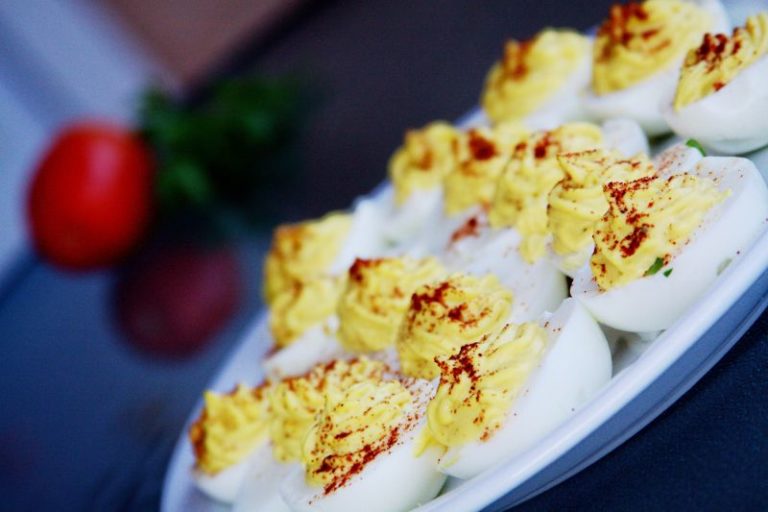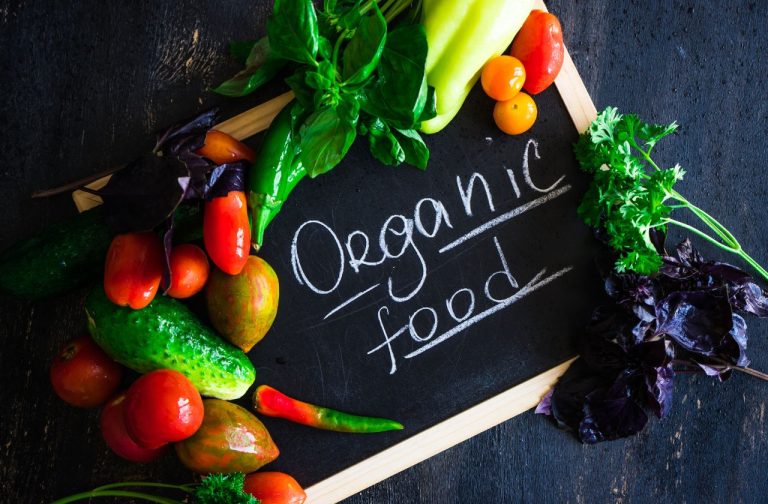How To Make Kombucha Tea
I get commissions for purchases made through links in this post. View our Affiliate Disclaimer.
Kombucha is an ancient, traditional fermented drink rich in probiotics and antioxidants. Traditionally it is made from black tea and sugar, but you can substitute green tea for black tea. Kombucha tea has been a prized beverage for over 2000 years by traditional cultures for its health-promoting properties.
Kombucha tea can easily be made at home using a SCOBY or Symbiotic Culture Of Bacteria and Yeast to ferment sugar-sweetened tea. The SCOBY consumes the sugar, converting it to beneficial antioxidants, probiotics, and organic acids, producing a drink that boosts energy levels and your immune system.
Kombucha is a nutritious drink with many benefits, and we will show you how to easily make kombucha tea at home. We will take you through the ingredients needed, the steps involved in the simple fermentation process, and some tips and tricks for getting the best results.
How To Make Your Own Kombucha Tea
Kombucha tea is a type of fermented tea that has become increasingly popular in recent years due to its many health benefits.
This fizzy, tangy, and slightly sweet beverage is made by fermenting sweetened tea with a symbiotic culture of bacteria and yeast (SCOBY).
The SCOBY feeds on the sugar in the tea to create a variety of beneficial compounds in the process, including probiotics, organic acids, and antioxidants to boost your immune system and energy levels.
Kombucha tea has a long and fascinating history that dates back more than 2,000 years to ancient China, where it was revered as a “tea of immortality” for its health-enhancing properties.
Over the centuries, the practice of brewing kombucha tea spread throughout Asia and Eastern Europe, and it eventually made its way to the Western world, where it has become a popular health drink in recent years.
The fermentation process takes roughly 7-12 days, depending on temperature and the strength of the SCOBY. Bacteria and yeast consume over 90% of the sugar during fermentation. This produces a drink that is low in sugar, despite sugar being one of the main original ingredients.
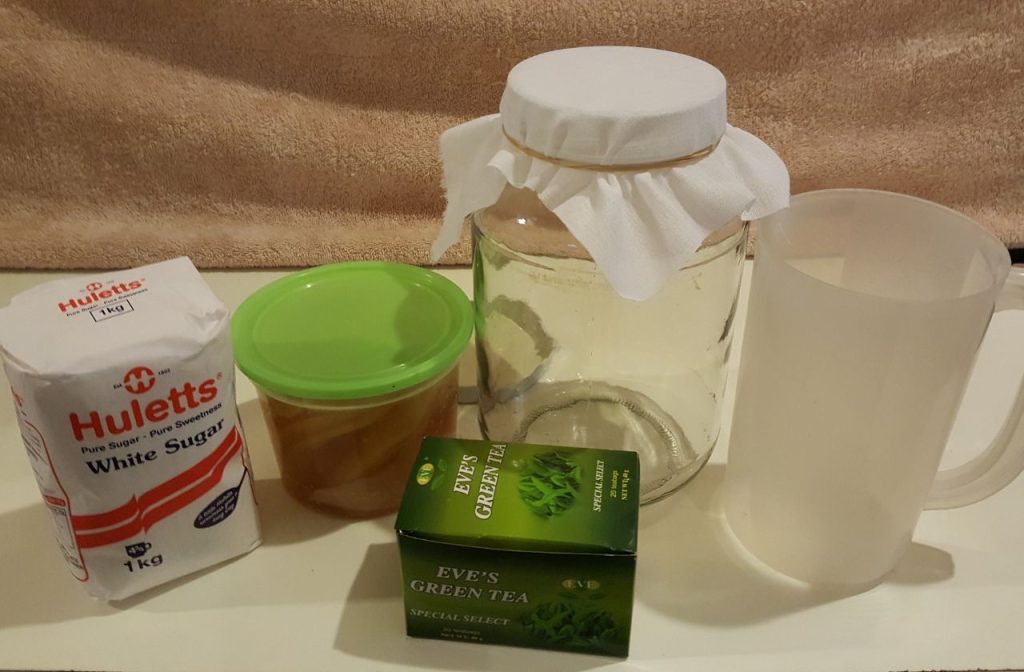
What You Need To Make Kombucha Tea
To make kombucha tea at home, you will need a few basic ingredients that can be easily found at your local grocery store or health food store.
To start a batch of kombucha, you will need the following ingredients:
- Filtered water (Chlorine and fluoride free)
- SCOBY in a cup full of starter tea
- Tea – either normal tea or green tea
- Sugar
- Jug to steep the tea
- Glass jar for the fermentation process
- Cotton cloth with elastic to cover the top of the jar
- Wooden spoon to stir
Clean filtered water is best to use for the kombucha, as chlorine and other chemicals will kill the bacteria on the SCOBY.
A SCOBY in starter tea can be obtained from a friend who is fermenting kombucha, or you can purchase a SCOBY online or as part of a kombucha tea starter pack.
How To Make A Batch Of Kombucha Tea
The tea used for fermentation can be normal black tea or green tea (my preference). Green tea produces a lighter, flavourful kombucha compared to the kombucha produced by black tea.
Black tea, green tea, and oolong tea are the most commonly used teas for making kombucha tea. It is important to use high-quality tea that is free from any added flavors or oils.
The jar for fermentation must be glass, NOT metal or ceramic. Metal causes a reaction that kills the SCOBY. Lead can leech out of certain ceramics and into the tea.
I generally make 1-liter batches at a time, but you can increase that according to your consumption. To make a half-gallon of kombucha, double the tea bags and sugar quantities listed, or to make a gallon, multiply these ingredients by 4.
Use the following quantities to make a 1-liter batch of kombucha.
- 2 tea bags (or 1.5 teaspoons of loose tea)
- ¼ cup of sugar – The sugar should be white sugar. Brown sugar does not seem to work as well.
- 1 liter filtered water
- ½ to 1 cup starter tea with SCOBY
- Optional flavorings. Once the kombucha tea is finished fermenting, you can add flavorings such as fresh fruit, herbs, or spices to create a customized flavor profile. This would be for a second ferment and is completely optional. You can enjoy your kombucha tea plain if you prefer.
Method For Brewing Kombucha Tea
Boil the liter of water. Pour the water into a jug with the sugar. Stir the water with the wooden spoon till the sugar dissolves. Place the tea bags in the sugar water and steep for 10 to 15 minutes. The longer you leave the tea in the water, the stronger the tea will be.
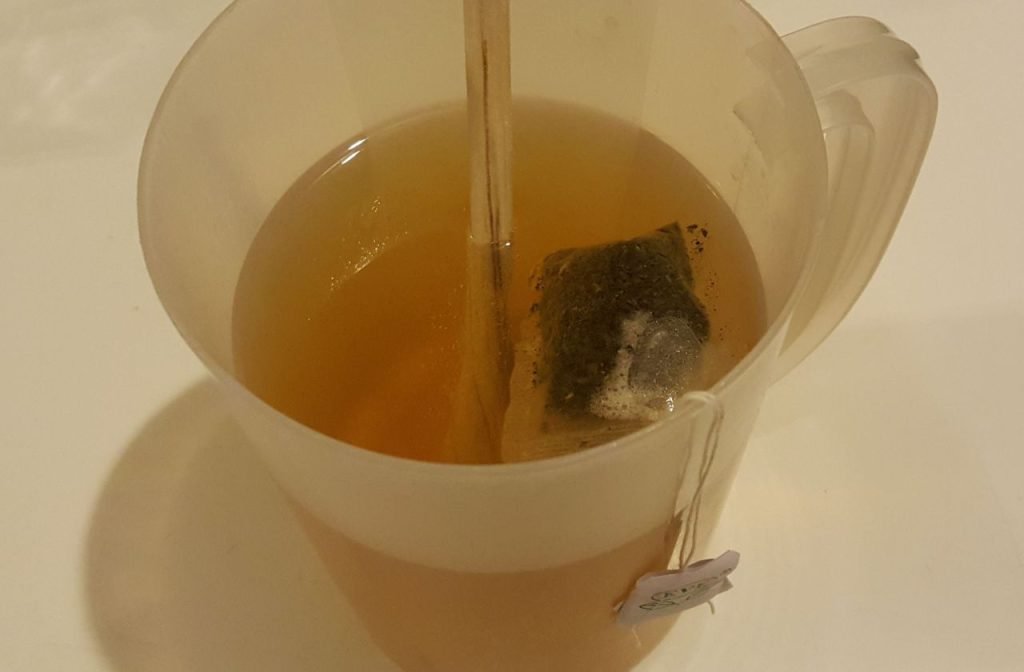
Remove the tea bags after the required time and let the tea cool to room temperature. Once the tea has cooled, pour it into the glass jar.
Add starter tea from a previous batch (or purchased as part of your starter kit) and the SCOBY to the liquid.
Cover the jar with the cotton cloth and secure it with a rubber band.
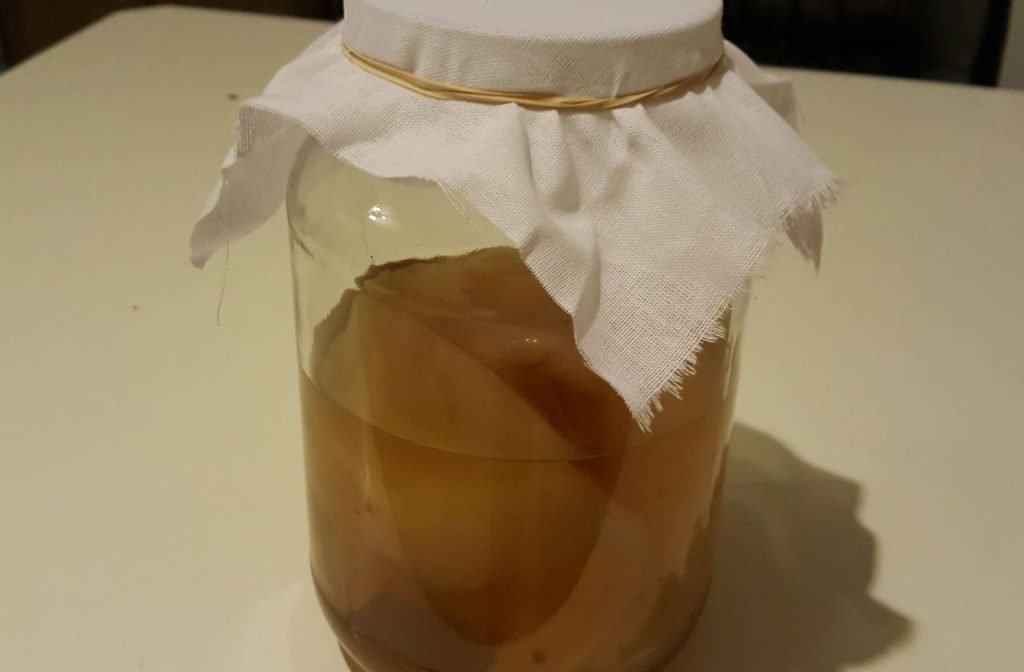
Allow the mixture to sit undisturbed at 20 to 30 Celsius (68-85°F), out of direct sunlight, for 7-12 days. The longer you leave it, the stronger and more vinegary the taste becomes.
Pour kombucha off the top of the jar to consume or to flavor in a second ferment. Keep the SCOBY and enough liquid from the bottom of the jar. This will be your starter tea for fermenting the next batch of kombucha.
If you are interested in other probiotic fermented foods, check out out post on How To Make Kefir Yoghurt!
Kombucha Tea Second Ferment For Flavor (Optional)
The second ferment is a short ferment to add additional flavorings to the tea and and a natural carbonation of fizziness to your kombucha.
- Transfer the kombucha tea to airtight bottles, leaving about an inch of headspace at the top.
- Add any desired flavorings, such as fresh fruit or herbs, to the bottles.
- Allow the kombucha tea to ferment for an additional 2-3 days at room temperature.
Place in the fridge to slow down the fermentation process and store the kombucha.
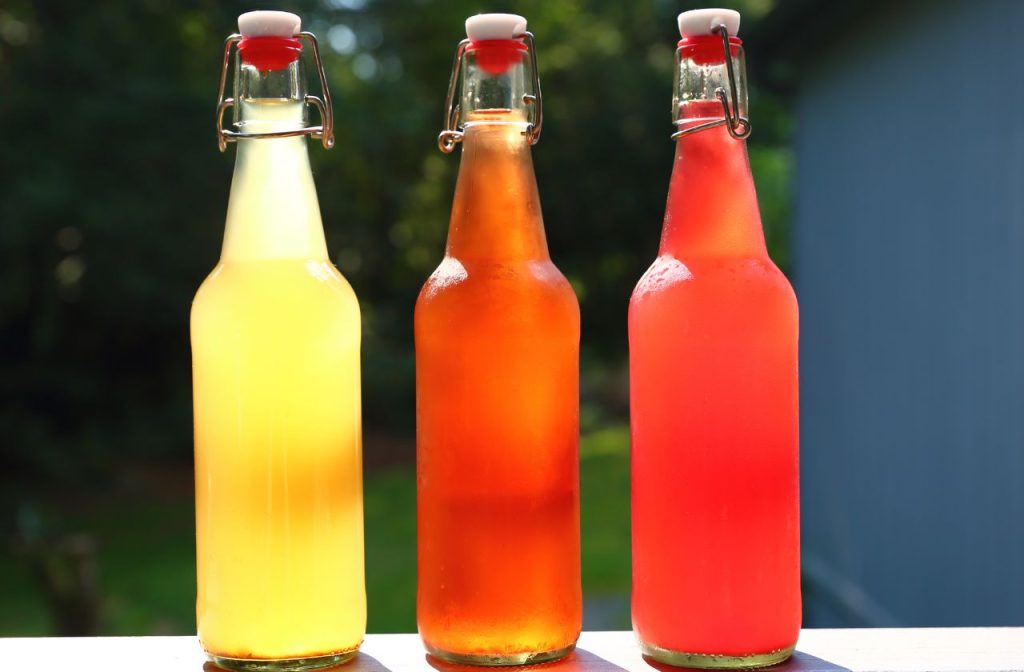
Tips For Making Kombucha Tea
While making kombucha tea is a relatively simple process, there are a few tips and tricks that can help ensure success and avoid common pitfalls.
Here are some helpful tips for making kombucha tea.
- Use high-quality ingredients. Use high-quality tea, filtered water, and organic sugar to ensure the best possible taste and health benefits.
- Keep everything clean. Make sure that all brewing equipment is clean and sanitized to avoid contamination.
- Don’t disturb the SCOBY. Avoid moving or disturbing the SCOBY during fermentation, as this can disrupt the fermentation process.
- Monitor the temperature. Kombucha tea ferments best in a warm environment, ideally between 75-85°F or 24-29°C. Keep the jar in a warm spot, away from drafts and direct sunlight.
- Taste test regularly. Taste the kombucha tea regularly during fermentation to determine your preferred level of sourness.
- Don’t let it ferment too long. Over-fermentation can lead to overly sour or vinegary kombucha tea. Stick to the recommended fermentation time and taste regularly.
- Experiment with flavorings. Adding fresh fruit, herbs, or spices to the second fermentation can add delicious and unique flavors to your kombucha tea.
- Be patient. Finding your perfect kombucha tea recipe can take some trial and error. Don’t get discouraged if your first batch doesn’t turn out as expected.
Storing Kombucha Tea
Once your kombucha tea is ready, it’s important to store it properly to maintain its quality and prevent spoilage.
We have compiled some top tips for storing your kombucha tea once it has reached the desired level of fermentation.
- Refrigerate the finished kombucha. After the second fermentation, store the kombucha tea in the refrigerator to slow down the fermentation process and preserve its flavor and carbonation.
- Use airtight bottles. Store your finished kombucha tea in airtight bottles or jars to prevent exposure to air and contamination.
- Use the kombucha within a reasonable time frame. Kombucha tea will continue to ferment and become more sour over time, so it’s best to consume it within a reasonable time frame. For best results, consume within one to two weeks of bottling.
- Store the SCOBY properly. If you need to store the SCOBY for future batches, keep it in a sealed container in some of the finished kombucha tea in the refrigerator. The SCOBY can be stored for several weeks or even months if stored properly.
Following these simple storage tips, you can enjoy delicious and healthy kombucha tea for weeks.
Conclusion
Kombucha tea is a delicious and healthy beverage that has become increasingly popular in recent years. While it may seem intimidating to make your own kombucha tea at home, it’s actually a relatively simple process that can be easily mastered with some practice.
Whether you are a kombucha enthusiast or just looking to try something new, making your own kombucha tea can be a fun and rewarding experience that allows you to create a delicious and healthy beverage that you can enjoy any time of day.
With a little bit of effort, you can enjoy the many health benefits of kombucha tea and impress your friends and family with your brewing skills. Happy brewing!
Get more posts like this
Subscribe to our mailing list and get interesting homesteading and green living info and updates to your email inbox.
Thank you for subscribing.
Something went wrong.


